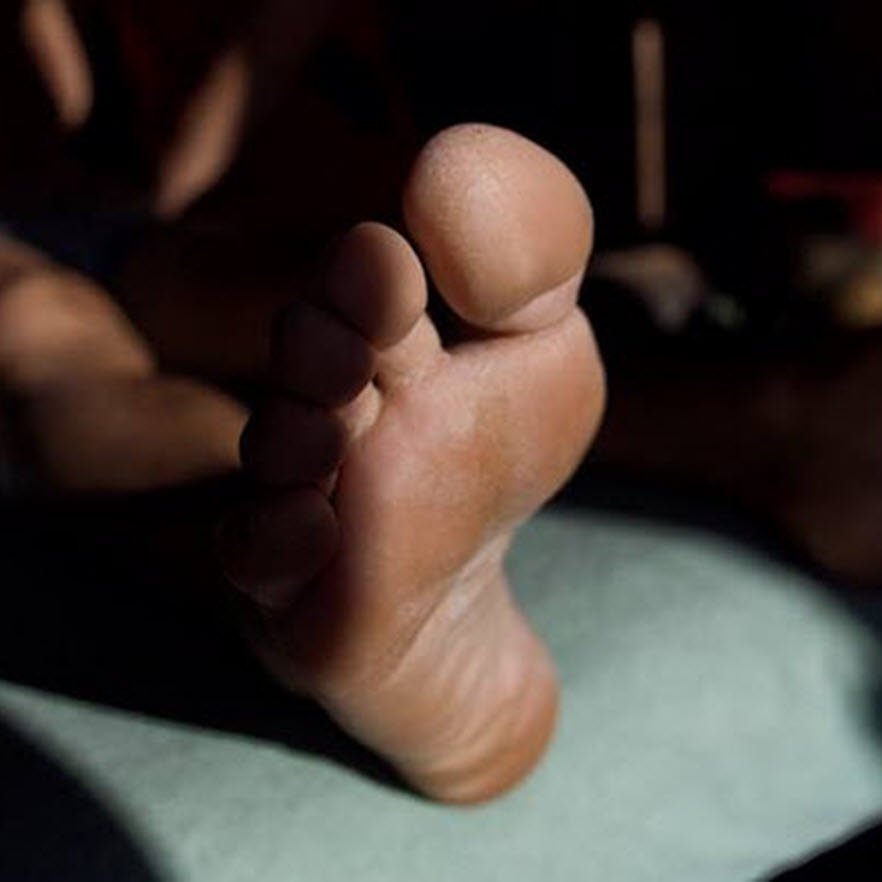Preventing blisters can seem hit and miss at times. It shouldn't be, especially when you understand what causes blisters. Here, in one graphic, is the basis of all you need to know. Every blister prevention strategy does one or more of these things.
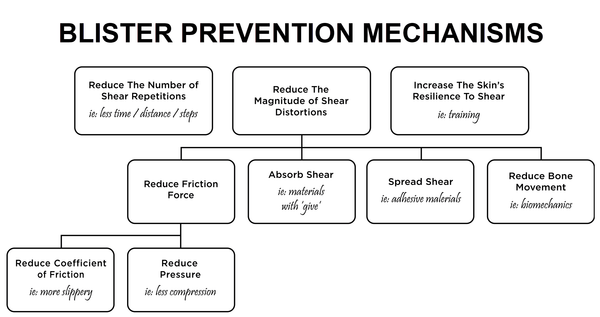
These are all the ways blister prevention strategies can work
How to choose the right blister prevention strategy
When I'm looking at a blister and wondering how best to prevent it from occurring again, the flowchart above is exactly what's going through my mind.More often than not, the first and third mechanisms don't really apply. I'm not into telling someone they can't walk or run as far, or play the whole game - it'll work, but it's a total a cop-out. And as far as skin resilience is concerned, this can be relevant to someone just starting an exercise program or doing a funrun. But most people I see and talk to are athletes who are active already, so they've maxed-out the adaptive response of their skin already. And they're usually awake to the rookie errors of starting a race in brand new shoes, or not training to the terrain and conditions of the event.So that leaves the blister prevention mechanism of REDUCING THE MAGNITUDE OF SHEAR DISTORTIONS. This is where the blister prevention strategy gold is.
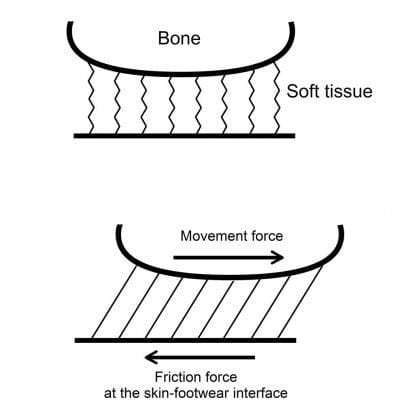
A visual representation of soft tissue shear
Foot blisters are caused by the skin and bone moving out of sync with one another, creating shear distortions. I'm always trying to figure out how I can reduce the magnitude of these shear distortions to effect successful blister prevention.
Here’s how I think about preventing every single blister:
- How will I reduce FRICTION LEVELS
- How will I reduce PRESSURE
- How will I SPREAD SHEAR LOAD
- How will I ABSORB SHEAR
- How will I MINIMISE HOW MUCH THE BONES ARE MOVING AROUND
1. FRICTION LEVELS (aka coefficient of friction)
Wherever I can, I use Engo patches, because they take up no room in the shoe, last a very long time and reduce friction in a targeted way. Otherwise, I recommend ArmaSkin socks or 2Toms Blistershield powder or a lubricant. Keep in mind, reducing friction levels is all about making things more slippery. That's what every single blister prevention strategy under "reduce friction levels" on the flowchart does. Yes it does! It allows the skin surface to move more in sync with the underlying bone.
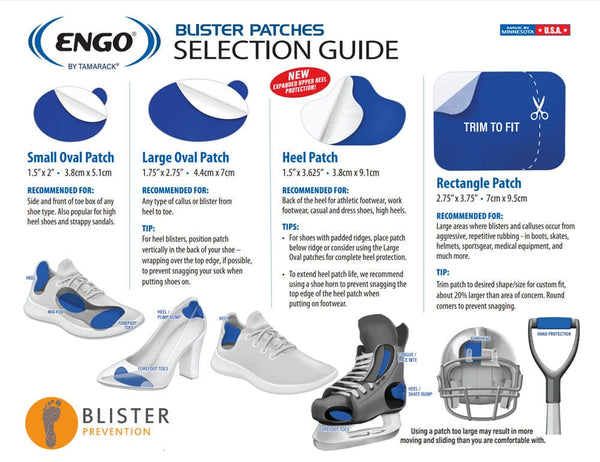
ENGO Blister Patches are great at reducing the coefficinet of friction
2. PRESSURE
There are a bunch of ways to reduce pressure. The best one will depend on where the blister is. I like Spenco insoles for blisters under the ball of the foot at a minimum. But this blister location often requires something even more, like pressure deflection padding, orthotics, calf stretches and even shoes with a higher heel height differential. For toes, it all depends on which toe blister location. Sometimes toesocks do the trick, sometimes a gel toe protector is best blister prevention strategy. Other times nothing less than a custom-made toeprop is required. For blisters at the back of the heel, I don't even bother with pressure reduction - friction management with an ENGO patch is all that's needed.
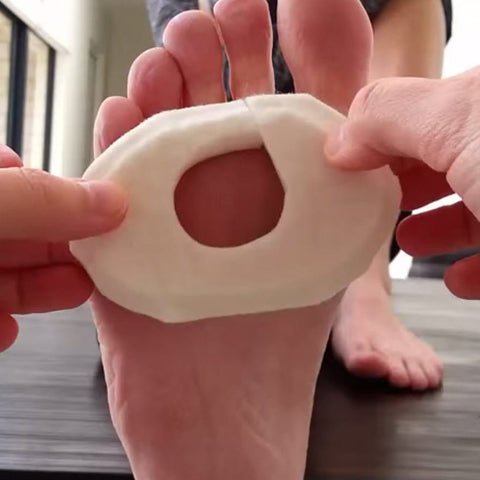
Donut pads can deflect pressure from blisters and blister-prone areas
3. SPREAD SHEAR LOAD
This is how tapes work. Rigid tapes will perform better at spreading shear load than flexible tapes. Stretchy tapes like Fixomull Stretch, Rocktape, Kinesio Tape, Elasticon and Fleecyweb make it easier to apply smoothly and avoid creases. This is especially helpful around the toes. However, rigid tapes probably perform a bit better at spreading the blister-causing shear forces. Brands like Leuko and BSN all make rigid tapes. They are often referred to as “zinc oxide” tapes due to the type of adhesive they use. Other rigid tapes you may know are the good old paper tape, and moleskin (some moleskins). And of course, duct tape is a rigid tape. It shouldn’t be applied to the skin, however, as its adhesive is not medical grade. If you want to learn more about the blister prevention strategy of taping, read this article.
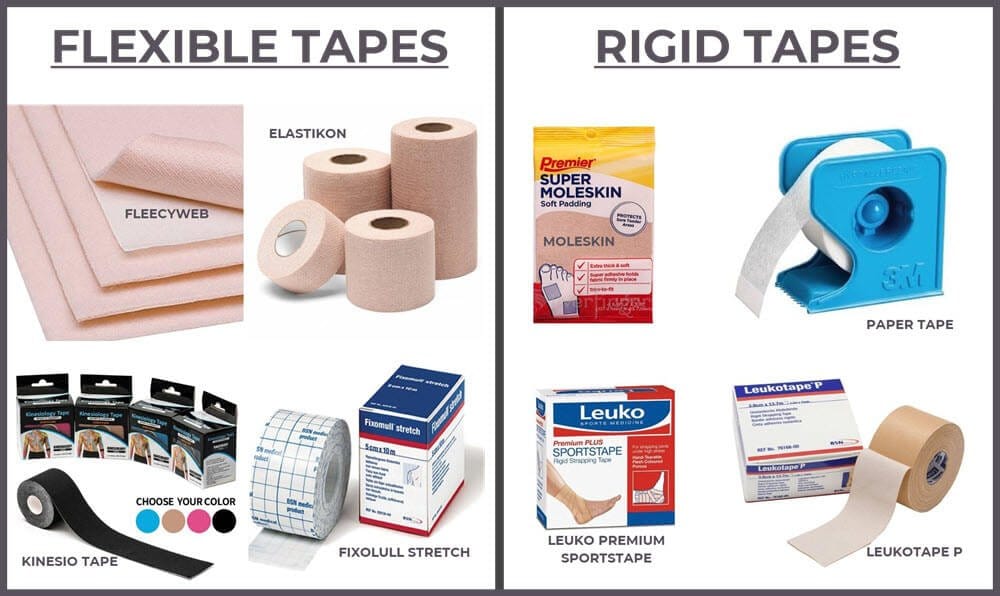
Different types of tapes used for blisters - flexible and rigid
4. ABSORB SHEAR
The same materials that cushion (reduce pressure) also absorb shear. How? Logically, if there is some shear deformation within the gel of your gel toe protector, cushioned insole or thick padded sock, then less isshear required to occur within the skin and soft tissues of your foot. The fibres of loose merino wool placed over the skin (and held in place purely by the sock) can potentially glide over one another to affect shear absorption too. This is an important blister prevention strategy to keep in mind.

Gel toe protectors not only cushion, they're also able to absorb huge amounts of shear.
5. BONE MOVEMENT
Remember, shear distortions start with bone movement. If you're standing still, there is no shear. As soon as you start moving, the bones move back and forth relative to the skin surface. This is what shear is - the skin and bone moving out of sync with one another. So if there is any reason for your bones to be moving more than they have to within your foot, we can hone in on this. Perhaps your calf muscles are tight and contributing to back-of-heel blisters. Perhaps you have ligamentous laxity and need an orthotic to minimise the excessive movement of the metatarsal heads to prevent ball-of-foot blisters. Consulting a podiatrist may pay dividends in this regard to find the right blister prevention strategy.
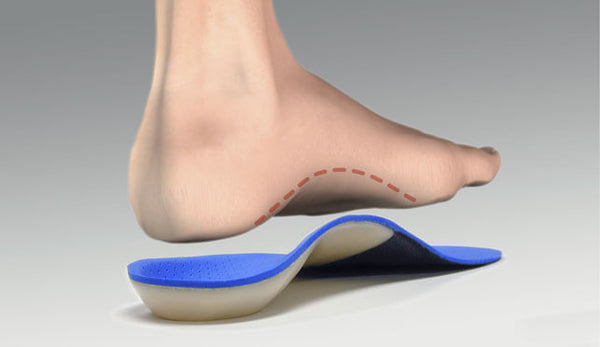
Orthotics can be very helpful in preventing some blisters by reducing the amount of bone movement.
Not sure what shear distortions look and feel like?
Take a look at the video below. Remember, blisters are not a superficial-to-deep "wear" injury. It’s not like your skin is rubbed and rubbed and this wears right through your skin, from superficial to deeper layers. Blisters start as a tear under the skin surface, caused by it being stretched back and forth, over and over again as you walk - until it fatigues.
Wrapping up
The best blister prevention strategies work by doing one or more of these things.
- REDUCE FRICTION LEVELS
- REDUCE PRESSURE
- SPREAD SHEAR LOAD
- ABSORB SKIN SHEAR
- MINIMISE HOW MUCH THE BONES ARE MOVING AROUND
